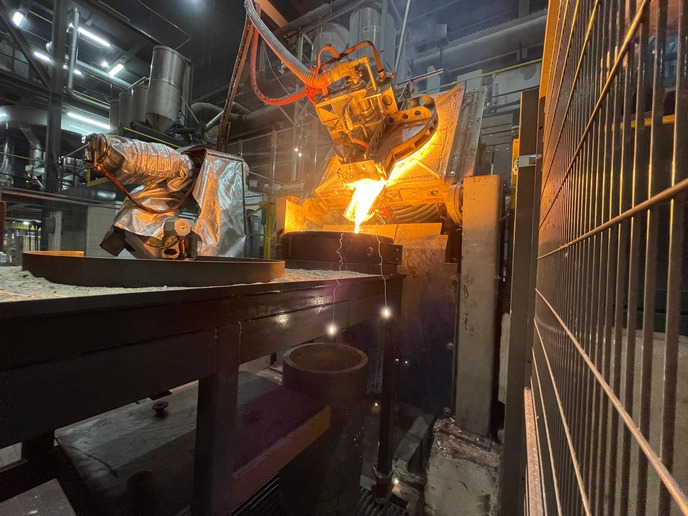Silicon via aluminothermic reduction of quartz in slag
Silicon is essential to human applications. It is widely used in electronics and solar cells and is a major constituent in ceramics, bricks and Portland cement. Its supply is at high risk and silicon has been designated one of 34 critical raw materials. State-of-the-art silicon production is highly energy- and carbon-intensive and generates tremendous CO2 emissions. Given that global silicon production was close to 9 million tonnes in 2022, more sustainable and carbon-neutral production methods will have tremendous impact. The pioneering EU-funded SisAl Pilot project has delivered the step-change process that the mining industry – and the planet – needs, replacing today’s carbon-intensive process with one using secondary aluminium and quartz (silicon dioxide) sources in large-scale silicon production.
Aluminothermic reduction of quartz in slag
Since the beginning of the 1900s, silicon has primarily been produced from quartz (the most abundant mineral in Earth’s crust) by reacting it with carbon-containing materials at very high temperature in a submerged arc furnace. Each tonne of silicon produced requires an electrical input greater than 10 MWh and generates about 5 tonnes of CO2. The SisAl Pilot project has enabled the first (and to date only) alternative silicon production process to be demonstrated beyond the 100 kg scale. According to project coordinator Gabriella Tranell of the Norwegian University of Science and Technology, “the SisAl process replaces carbon-rich reducing agents with secondary aluminium sources such as end-of-life scrap and production side streams. Producing silicon from quartz via aluminothermic reduction generates no direct CO2 emissions. Further, the aluminium recovery process is very efficient and the SisAl process can flexibly use multiple secondary quartz streams such as slag (a metal oxides and silicon dioxide by-product) and quartz fine tailings (finely ground residues).” In addition to its flexible resource use and emissions reductions, the reaction between aluminium and the quartz found in slag releases energy rather than requiring it.
Circular economy and industrial symbiosis
Replacing the carbothermic submerged arc furnace approach with SisAl Pilot’s aluminothermic reduction of the quartz in slag does more than reduce energy and materials’ use and emissions. Silicon is the most widely used alloying element, particularly valuable in improving the properties of aluminium. The SisAl Pilot’s process closes the loop between the aluminium and silicon industries in an outstanding example of industrial symbiosis that contributes to a circular economy. “Metallurgy is a very old discipline. Metals have been produced via carbothermic reduction since the Bronze Age. New processes and fundamental knowledge are needed. We are now at the threshold of the biggest transformation in the industry’s history – decarbonisation. Industrial symbiosis is extremely important to reaching this goal and the SisAl process has demonstrated that this is possible,” Tranell adds.
A large-scale pilot attracts international attention
“Typically, industry wants proof that a process works beyond the lab to believe in its commercial potential. The SisAl Pilot project has demonstrated the aluminothermic reduction of quartz at large scale with different reactors and raw material mixes, attracting commercial actors from around the globe for customised business case discussions and calculations including detailed environmental impact studies,” notes Tranell. In a tremendous evolutionary leap, an alternative to carbothermic reduction is on its way to market, promising unprecedented impact on sustainability and climate change mitigation.
Keywords
SisAl Pilot, silicon, quartz, aluminium, aluminothermic reduction, slag, submerged arc furnace, industrial symbiosis, circular economy, critical raw materials



